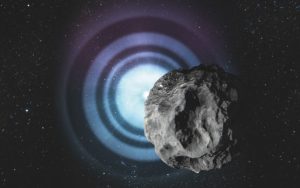
Dr. Marcos Santander, assistant professor of physics and astronomy, and his work with the VERITAS gamma-ray observatory in Arizona.
The VERITAS gamma-ray observatory in southern Arizona is an array of four 12-meter telescopes equipped with fast, sensitive cameras designed to capture nanosecond-long flashes of UV light produced by gamma rays as the interact with the Earth’s atmosphere. Using this technique, VERITAS can detect gamma rays from extreme astrophysical sources such as supermassive black holes at the centers of distant galaxies, and supernova remnants in our own Milky Way, enabling detailed studies of these objects at the highest observable energies.
While VERITAS’ main science driver is gamma-ray astronomy, the combination of large mirrors and fast cameras enables new opportunities for optical observations of transient and variable objects in the UV/optical band. These capabilities have been recently demonstrated by the VERITAS measurement of a star diameter through the observation of an asteroid occultation and the demonstration of a novel stellar intensity interferometry method.
A new collaborative project between VERITAS collaborators at Washington University in Saint Louis, who lead the effort, and the UA gamma-ray group led by Dr. Marcos Santander has been recently funded by the National Science Foundation to upgrade the VERITAS camera readout electronics which will enable searches for optical flashes associated with fast radio bursts and the search for Trans-Neptunian Objects in our Solar System, among other studies.
Physics, astronomy, CS and ECE undergraduate students interested in this line of research are encouraged to contact Santander for potential research projects. See the UA group’s webpage for contact information.